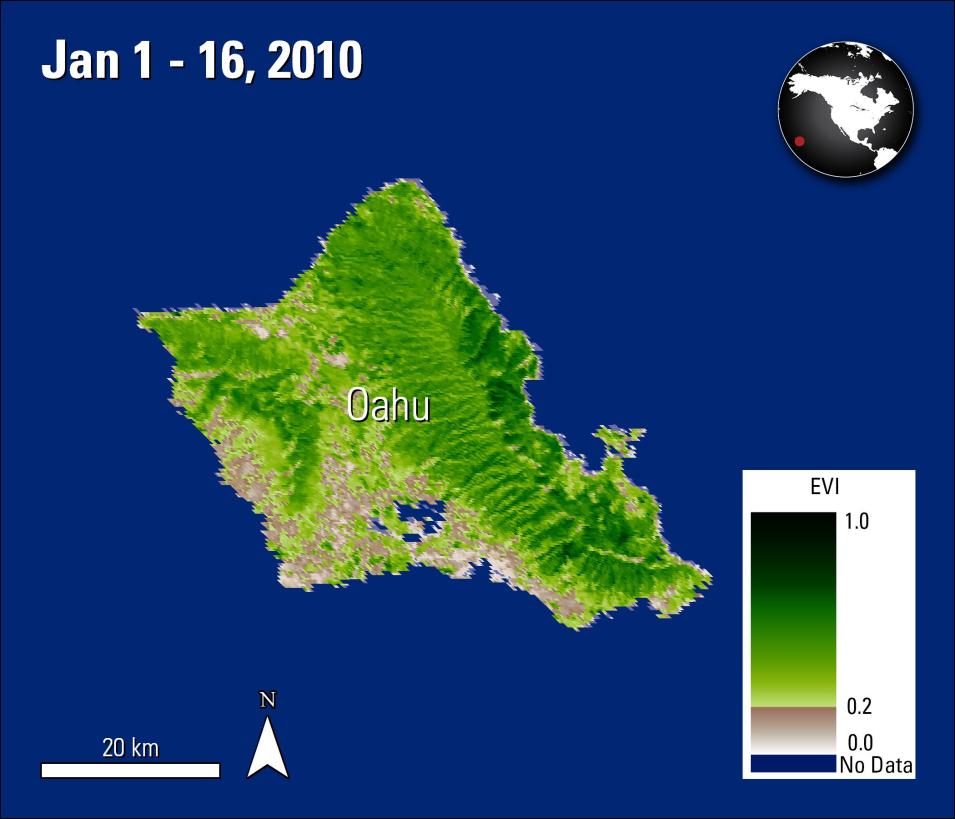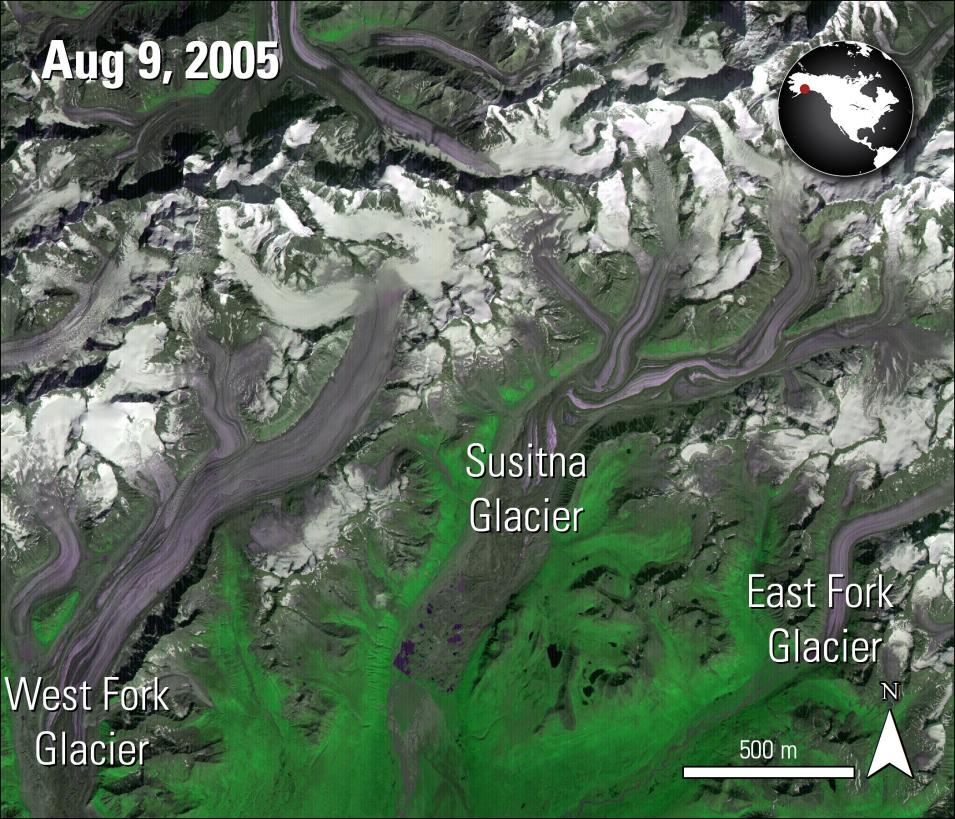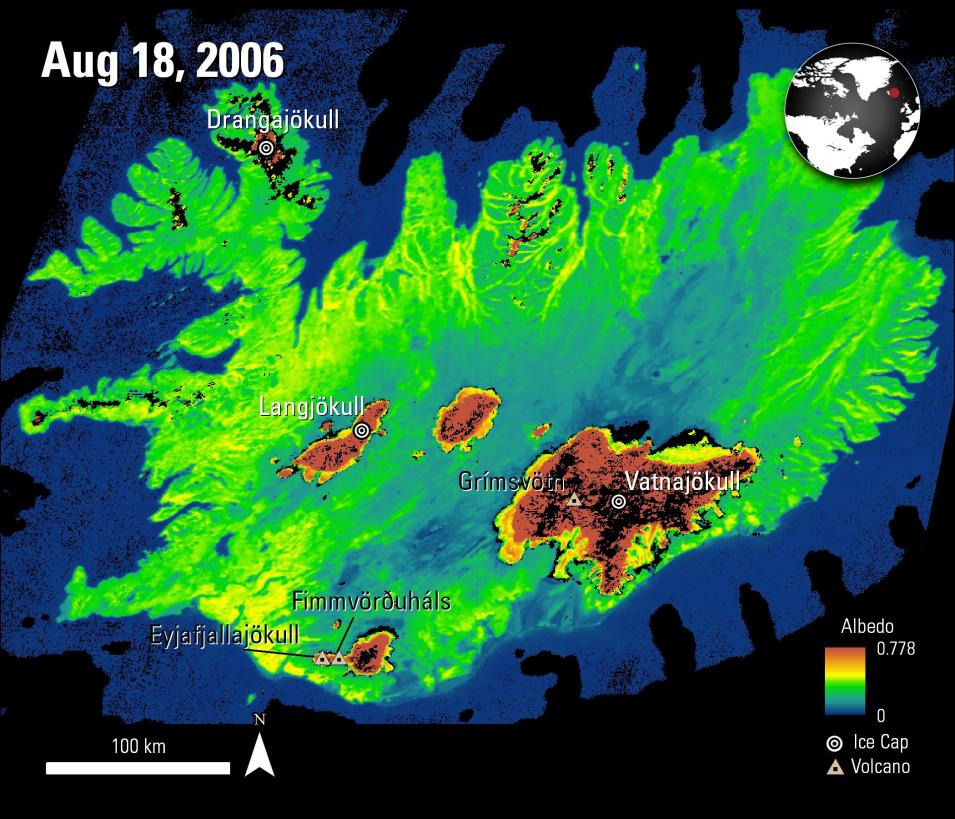Instruments and Techniques Used
Albedo, the reflection of the sun from the Earth’s surface, is a way to understand the response of glaciers to climate and in the case of Iceland – response to debris from volcanic eruptions. Iceland is unique in that it has several ice caps located within a close proximity of active volcanoes.
The authors use in-situ data collected every 10 minutes from 10 weather stations located on two of its largest ice caps, Vatnajökull and Langjökull, along with black sky albedo for shortwave broadband data from the Version 6 Terra and Aqua Combined Moderate Resolution Imaging Spectroradiometer (MODIS) Daily Albedo data product (MCD43A3) at 500 meter spatial resolution. Broadband albedo values were calculated from Landsat Surface Reflectance data at 30 meter spatial resolution to identify sub-pixel variability in the MODIS data.
Towards the end of the study period, two significant volcanic eruptions occur: Fimmvörðuháls (March 20 to April 12, 2010) and neighboring Eyjafjallajökull volcano (April 14 to May 22, 2010), and then Grímsvötn volcano (May 21 to May 28, 2011). The eruptions ejected mass amounts of ash into the sky, covering glaciers and disrupting air traffic.
Major Findings
Findings from the study indicate that post-2010 and 2011 eruptions average summertime (July – August) albedo decreased for all ice caps, with the exception of Drangajökull. The albedo of the ice caps on Eyjafjallajökull are noted as having experienced the greatest decrease in albedo. In conclusion, the authors find the Version 6 Terra and Aqua Combined MODIS Albedo data product (MCD43A3) a good data source for capturing the variability of albedo of Icelandic ice caps.
References
Publication Reference
Gascoin, S., Guðmundsson, S., Aðalgeirsdóttir, G., Pálsson, F., Schmidt, L., Berthier, E., Björnsson, H., 2017, Evaluation of MODIS Albedo Product over Ice Caps in Iceland and Impact of Volcanic Eruptions on Their Albedo: Remote Sensing, v. 9, i. 5, p. 1–18. doi:10.3390/rs9050399
Image Reference
- Granule IDs:
- MCD43A3.A2006230.h16v02.006.2016107035830
- MCD43A3.A2006230.h17v02.006.2016107012413
- DOI: 10.5067/MODIS/MCD43A3.006


